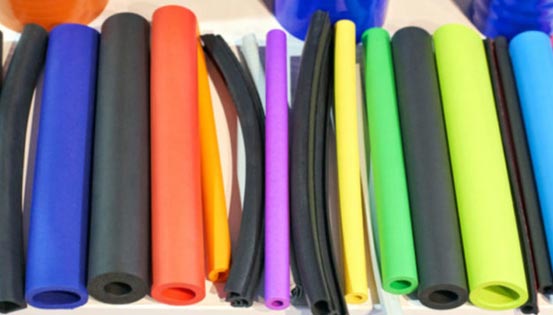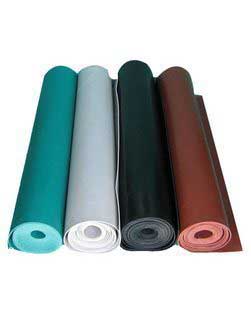Hydrogenated nitrile rubber (HNBR) is an interesting elastomer. As its fellow elastomers, HNBR also has a high tensile strength material, high elasticity, good abrasion resistance and low permanent set. Apart from it, the added advantage with HNBR is that it has a sound stability against thermal ageing and supports much better properties at low temperature than other oil and heat resistant elastomers. Hence, it is being heartily welcomed by the automotive industry. HNBR is a speciality engineering elastomer, and hence, its market volume is relatively small.
HNBR: The Substance
HNBR in itself is a derivative of nitrile
rubber which is hydrogenated in solution with the help of metal
catalyst. During composition, the nitrile groups are not effected while
carbon-carbon double bonds of nitrile rubber are converted into more stable
single bonds.


PROPERTIES
Mechanical PropertiesHNBR has extremely good mechanical properties. These usually have high tensile strength at service temperatures of 100-140°C as well as room temperature. Moreover, HNBR vulcanisates are resistant to crack growth as conventional CR elastomers.
Thermo-Oxidative Properties
HNBR is often referred to as the '150 degree elastomer' because of its
resistance to thermo-oxidative ageing. HNBR is more durable than the
peroxide crosslinked vulcanisate and sulphur-crosslinked vulcanisates as it
can withstand a relatively higher temperature in the engine compartment.
Cost Comparison
With so many advantages and benefits, HNBR is obviously a little more
expensive than the conventional polychloroprene. The complete replacement of
CR with HNBR increases the cost by around 5.7 times.
Future
More enhancements in the properties of HNBR grades will widen the scope of
its usage in automotive and other industries. Car timing belts for the time
being is the best example of its application, but it would soon be used for
other purposes too.
- Anti Vibration Mountings
- Automobile Rubber Products
- Calendered Rubber Products
- Extruded Rubber Products
- Medical Rubber Products
- Metal Bonded Components
- Rubber Adhesives & Sealants
- Rubber Ball
- Rubber Bands
- Rubber Beading
- Rubber Bearing
- Rubber Belt
- Rubber Buckets
- Rubber Bullets
- Rubber Cable
- Rubber Coating
- Rubber Duct
- Rubber Expansion Joints
- Rubber Flooring/Matting
- Rubber Footwear
- Rubber Gloves
- Rubber Injection Parts
- Rubber Lining
- Rubber Magnets
- Rubber Molded Products
- Rubber Pads
- Rubber Rollers
- Rubber Stopper
- Rubber Suit
- Rubber Track
- Rubber Valve
- Rubber Balloon
- Rubber Stamps
- Rubber Fenders
- Acrylic Rubber (ACM)
- Butadiene Rubber (BR)
- Butyl Rubber (IIR)
- Chlorosulfonated Polyethylene(CSM)/ Hypalon
- Ethylene Propylene Diene Monomer
- Fluoroelastomers (FKM)/Viton
- Isoprene Rubber (IR)
- Nitrile Rubber (NBR)
- Perfluoroelastomer (FFKM)
- Polychloroprene (CR)/Neoprene
- Polysulfide Rubber (PSR)
- Silicone Rubber (SiR)
- Styrene Butadiene Rubber
How to Make a Custom Rubber Stamp?
Whenever designing a custom stamp for your company, never compromise on its quality because in the end it is the most...
Read MoreLatex and Silicone Rubber Tubing - A Comparison!
Many industries use rubber tubing for various purposes. In fact, various types of rubber tubing are used for different applications...
Read MoreSilicone vs Acrylic Adhesive- A Comparison
Silicon and acrylic adhesives are those rubber adhesives that are widely used in Polyimide tapes. In fact, the polyimide...
Read More

